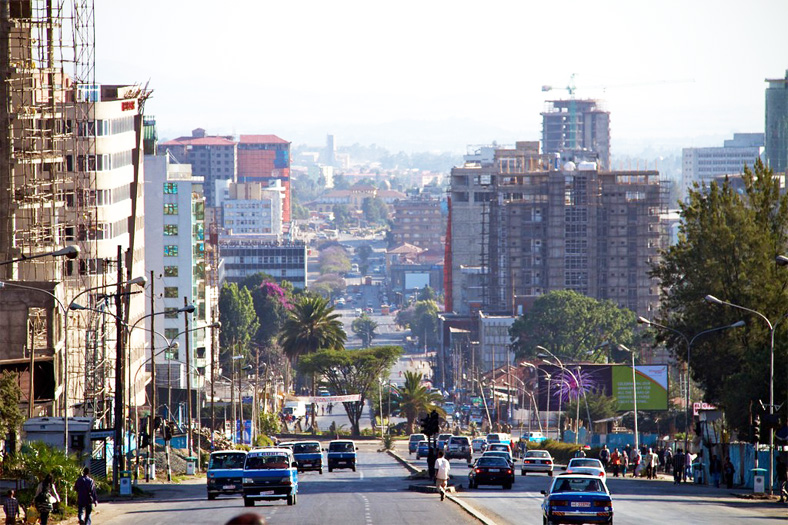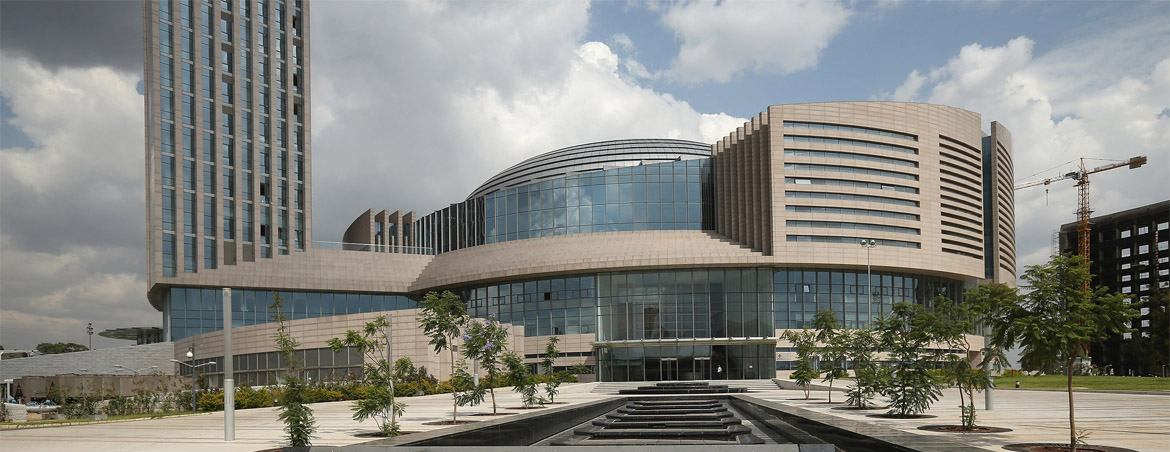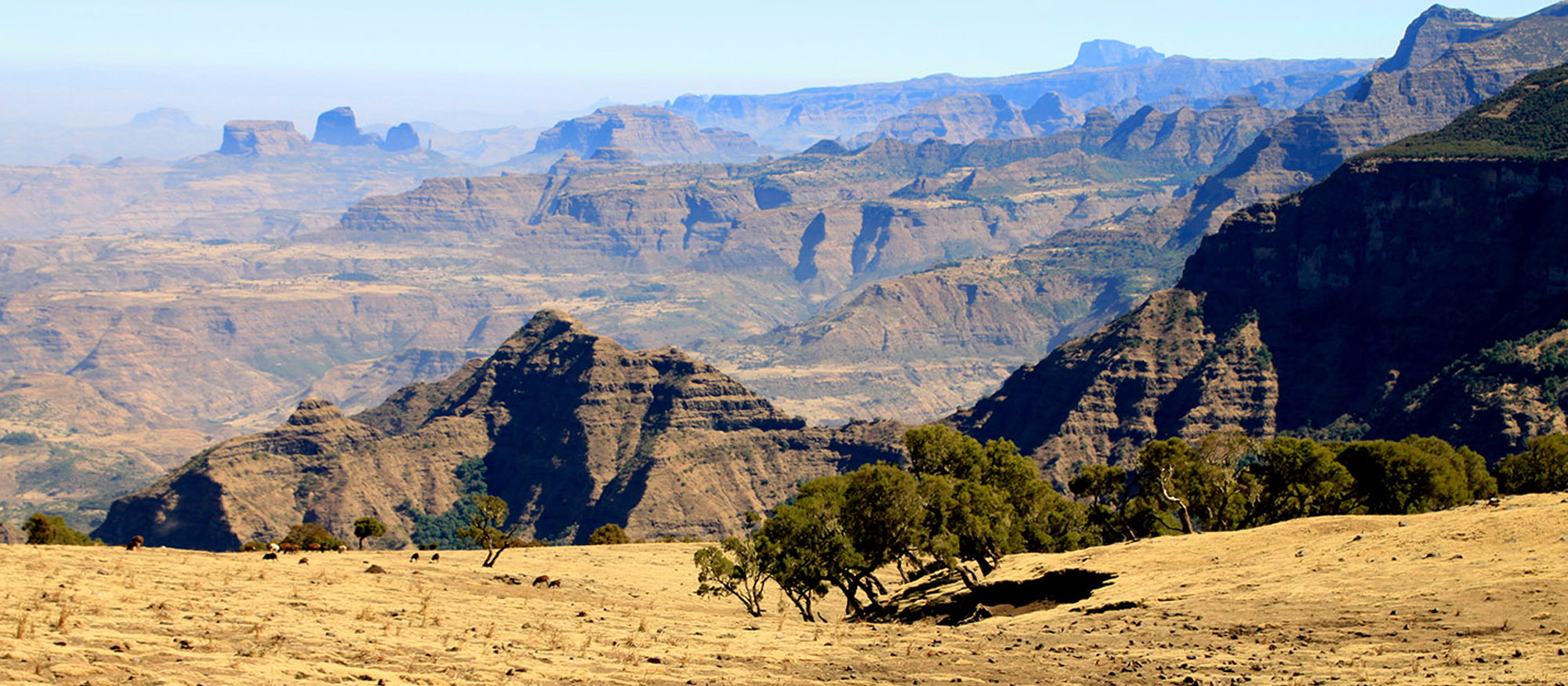Ethiopia Country Information
PHYSICAL LOCATION OF ETHIOPIA

Ethiopia, officially known as the Federal Democratic Republic of Ethiopia, is a country located in the Horn of Africa. It is bordered by Eritrea to the north and northeast, Djibouti and Somalia to the east, Sudan and South Sudan to the west, and Kenya to the south. With over 100 million inhabitants, Ethiopia is one of the most populous landlocked countries in the world, as well as the second-most populous nation on the African continent after Nigeria. It occupies a total area of 1,100,000 square kilometers (420,000 sq mi), and its capital and largest city is Addis Ababa.
ETHIOPIA LANGUAGE
Ethiopia is a land of enormous diversity and as a result Ethiopia has more than 80 languages and over 200 dialects. Amharic or Amharigna is the official language of Ethiopia although the government encourages local languages to be taught in schools. The working languages of the national/regional governments may differ according to regions. Other main languages include Oromigna and Tigrigna. English, French, Italian and Arabic are also widely spoken.
ETHIOPIA GOVERNMENT

Ethiopia adopted a new constitution that established the Federal Democratic Republic of Ethiopia (FDRE) in 1995.The federal government is responsible for national defense, foreign relations and general policy of common interest and benefits. The federal state comprises nine autonomous states vested with power for self-determination. The FDRE is structured along the lines of bicameral parliament, with the council of Peoples' Representatives being the highest authority of the federal government while the federal council represents the common interests of the nations, nationalities and peoples of the states. Members of both councils are elected by universal suffrage for a five-year term.
ETHIOPIA ECONOMY & MARKET STRUCTURE
The Ethiopian economy is dominated by the agriculture and services sectors with each accounting for about 45 percent of gross domestic product (GDP), leaving only about 10 percent for industry, of which manufacturing accounts for about 6-7 percent.
Exports are highly concentrated, with coffee alone accounting for more than 60 percent of the total. Moreover, Ethiopia could hardly be located in the international market for manufacturing exports, having an industrial export share much less than the already minuscule median for Africa. The limited change in the structure of the economy, especially with regard to manufacturing, is partly explained by the low levels of investment flows and the sluggish growth of the private sector, which was too little to affect its historically low share in labor-intensive manufactures.
Currency: birr, GDP (PPP): $144.6 billion, 10.3% growth, 10.2% 5-year compound annual growth, $1,589 per capita, Inflation (CPI): 7.4%, FDI Inflow: $1.2 billion, Agriculture accounted for 46.3% of GDP, 83.9% of exports, and 80% of the labor force in 2006/2007, compared to 44.9%, 76.9% and 80% in 2002/2003, and agriculture remains the Ethiopian economy's most important sector.
AREAS OF CONCERN In ETHIOPIA
Overgrazing, deforestation, and poor agricultural practices have contributed to soil erosion , particularly in the Tigray and Eritrea regions, that substantial areas of farmland have been lost to cultivation.
ETHIOPIA GEOGRAPHY
Area: 1.2 million square Kilometers Capital: Addis Ababa Environmental concerns: Overgrazing; deforestation; soil erosion; Climate: tropical monsoon with wide topographic-induced variation.
ETHIOPIA POPULATION
The population of Ethiopia is around 107 million. The growth rate is estimated at 7.6%. Of the current population, 46% fall within the 1-14 age range; 51% between 15 and 64; and 3% are over 65. Approximately 17% of the population is estimated to live in urban areas.
HEALTH AND SOCIAL ISSUES In ETHIOPIA
The major health problems of the country remain largely preventable communicable diseases and nutritional disorders. Despite major progresses have been made to improve the health status of the population in the last one and half decades, Ethiopia's population still face a high rate of morbidity and mortality and the health status remains relatively poor.
Life expectancy is currently at 64.58 years. Infant mortality rate is 59 every 100 live births. 90% of child deaths are due to pneumonia, diarrhea, malaria, neonatal problems, malnutrition and HIV/AIDS, and often a combination of these conditions.
Ethiopians are suffering from the lack of basic needs of life, such as food, health care, housing, education, safe and healthy environment. One of the major causes of famine in Ethiopia is due to the drought.
ETHIOPIA COMMUNICATION AND TRANSPORTATION
797,500 main telephone lines, 4,288,023 Internet users (2016), 1,000 mm (3 ft 3 3/8 in) gauge of railroad, 1,000 motor vehicles (2007).
ETHIOPIA INDEPENDENCE

Ethiopia affirmed its independence from Italy after its victory in the Battle of Adowa in
1896, and retained its independence through strong leaders and key alliances with other European powers. Nevertheless, Ethiopia was colonized prior to World War II by Italian forces in
1936, and not liberated until the
1940s.
ETHIOPIA MILITARY
Ethiopia spent $329,000,000 on their military in 2012 which amounted to 0.8% of the country's GDP that year.
ETHIOPIA RESOURCES AND INDUSTRY
Natural resources: gold; platinum; copper; potash; natural gas; hydropower Agriculture: maize; sorghum; wheat; teff; livestock and dairy products Industry: small-scale consumer goods; Exports: $3.163 billion; Imports: $15.87 billion.


 Ethiopia adopted a new constitution that established the Federal Democratic Republic of Ethiopia (FDRE) in 1995.The federal government is responsible for national defense, foreign relations and general policy of common interest and benefits. The federal state comprises nine autonomous states vested with power for self-determination. The FDRE is structured along the lines of bicameral parliament, with the council of Peoples' Representatives being the highest authority of the federal government while the federal council represents the common interests of the nations, nationalities and peoples of the states. Members of both councils are elected by universal suffrage for a five-year term.
Ethiopia adopted a new constitution that established the Federal Democratic Republic of Ethiopia (FDRE) in 1995.The federal government is responsible for national defense, foreign relations and general policy of common interest and benefits. The federal state comprises nine autonomous states vested with power for self-determination. The FDRE is structured along the lines of bicameral parliament, with the council of Peoples' Representatives being the highest authority of the federal government while the federal council represents the common interests of the nations, nationalities and peoples of the states. Members of both councils are elected by universal suffrage for a five-year term.
 Ethiopia affirmed its independence from Italy after its victory in the Battle of Adowa in1896, and retained its independence through strong leaders and key alliances with other European powers. Nevertheless, Ethiopia was colonized prior to World War II by Italian forces in 1936, and not liberated until the 1940s.
Ethiopia affirmed its independence from Italy after its victory in the Battle of Adowa in1896, and retained its independence through strong leaders and key alliances with other European powers. Nevertheless, Ethiopia was colonized prior to World War II by Italian forces in 1936, and not liberated until the 1940s.